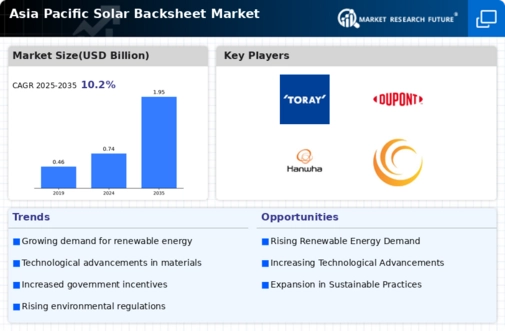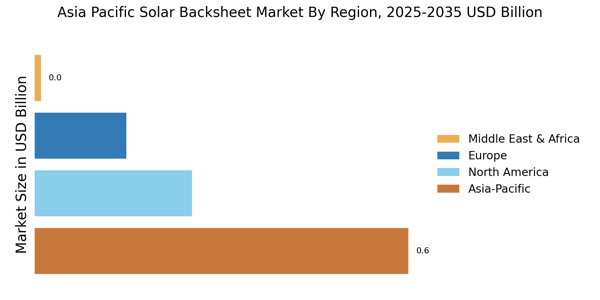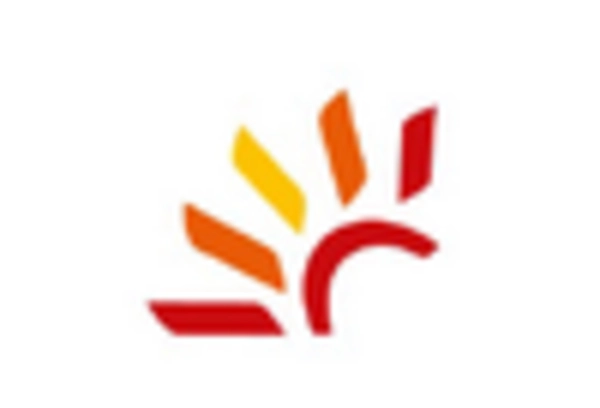China : Unmatched Growth and Innovation
China holds a commanding market share of 450.0 million, representing a significant portion of the APAC solar backsheet market. Key growth drivers include robust government policies promoting renewable energy, substantial investments in solar infrastructure, and increasing demand for solar installations. The country is witnessing a surge in consumption patterns driven by urbanization and industrialization, supported by initiatives like the 14th Five-Year Plan, which emphasizes clean energy development.
India : Government Support Fuels Growth
India's solar backsheet market is valued at 200.0 million, accounting for a growing share in APAC. The market is driven by government initiatives like the National Solar Mission, which aims to achieve 100 GW of solar capacity by 2022. Demand is rising due to increasing energy needs and a shift towards sustainable energy sources. The industrial sector is also expanding, with significant investments in solar technology and infrastructure.
Japan : Focus on Quality and Efficiency
Japan's solar backsheet market is valued at 150.0 million, reflecting a strong commitment to renewable energy. The growth is propelled by technological advancements and a focus on high-quality solar products. Regulatory frameworks, such as feed-in tariffs, have encouraged solar adoption. The demand is particularly high in urban areas, where space is limited, leading to innovative solar solutions.
South Korea : Strong Government Initiatives
South Korea's solar backsheet market is valued at 80.0 million, driven by government policies aimed at increasing renewable energy usage. The Green New Deal initiative promotes solar energy, leading to increased installations. Demand is growing in urban centers like Seoul and Busan, where energy efficiency is a priority. The competitive landscape includes major players like Hanwha Q CELLS, which dominate the market.
Malaysia : Strategic Investments in Infrastructure
Malaysia's solar backsheet market is valued at 40.0 million, with growth driven by government incentives and a focus on sustainable energy. The country is witnessing increased demand for solar installations, particularly in states like Selangor and Penang. The competitive landscape features both local and international players, with a focus on enhancing solar technology and infrastructure development.
Thailand : Investment in Renewable Technologies
Thailand's solar backsheet market is valued at 30.0 million, supported by government policies promoting renewable energy. The country has seen a rise in solar installations, particularly in provinces like Nakhon Ratchasima and Chonburi. The competitive landscape includes both domestic and international players, with a focus on innovative solar solutions and technology advancements.
Indonesia : Focus on Sustainable Development
Indonesia's solar backsheet market is valued at 20.0 million, with growth driven by increasing energy demands and government initiatives promoting renewable energy. The market is still developing, with significant potential in urban areas like Jakarta. The competitive landscape is evolving, with local and international players entering the market to meet growing demand for solar solutions.
Rest of APAC : Varied Market Dynamics Across Regions
The Rest of APAC solar backsheet market is valued at 13.94 million, reflecting diverse opportunities across various countries. Growth is driven by local government initiatives and increasing awareness of renewable energy benefits. The competitive landscape varies significantly, with different players focusing on regional needs and market conditions. Countries like Vietnam and the Philippines are emerging as potential markets for solar technology.


















Leave a Comment